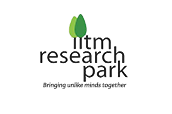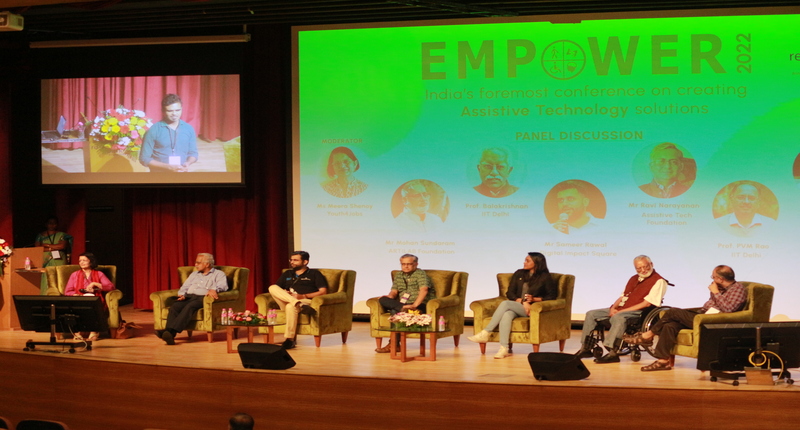CHENNAI 1st November 2022: Startups in the AT space serve a very niche but very fragmented market. The conventional approach to selling to the masses does not exist in this vertical, mainly because the consumers are different, there are special needs for varied disabilities, and the challenges therefore associated with all stages of product development i.e., from prototyping to selling a finished product in the market is not an easy wave to tide.
These may seem like deterrents to success but the scope under AT is far less competitive and has a huge headroom to accommodate several start-ups. C K Ranganathan, Founder Chairman, CavinKare, in his inaugural address iterated that it is essential for start-ups to think out-of-the-box. ‘Metoo’ or a copycat version of any existing product with poor use case will take products nowhere in specific to AT.
Siddarth Daga, Co-Founder, Head – Sales & Outreach at wheelchairs developing start-up, NeoMotion, says, “Startups in AT are unique and we need a platform to connect, network, co-learn and reach out to a potential market. The major advantage of participating at EMPOWER is the ability to connect with leaders in this space.
It gives us the scope to connect with key people like from WHO and UK’s GDI Hub. We can display and demonstrate the user-friendliness of our products to potential buyers and distributors, which is otherwise not possible for start-ups of our scale. Also, through EMPOWER we learn how to penetrate global similar markets like Africa and other Asian countries where the need for AT products is high.
Above all, as engineers, we are expected to create products that serve a purpose. EMPOWER gave us a chance to connect with fellow engineers and understand the specific needs of wheelchair-specific users, which is very important for product improvisation.” NeoMotion is an IIT Madras incubated start-up, that creates life-transformative personalized wheelchairs.
Similarly, a wide range of products and services suitable for the visually impaired, hearing impaired, speech difficulties, and slow learners were on display at this year’s EMPOWER. Applications suitable for virtual learning and teaching were the highlight. Several start-ups developing prosthetics were also among the exhibitors.
How are the big players contributing to AT
Tech giants like Google, TCS, Microsoft, Cisco, Accenture, and several others have begun to realize that an extensively inclusive and diverse workforce offers businesses a competitive advantage. EMPOWER’s keynote speaker K Ananth Krishnan, the Chief Technology Officer of Tata Consultancy Services (TCS), says his company considers accessibility as a business strategy and therefore, has invested heavily in the Accessibility domain of research and innovation.
“The industry looks at the AT domain from a disability front however TCS’s perspective is different to look at Accessibility. TCS has a strong belief that Accessibility is no more just a social aspect but beyond. Accessibility leads to inclusion and inclusion leads to innovation, business growth, and brand experience. Accessibility is a key strategic pillar in the United Nations’ 17 sustainability development goals, taking this domain to the next level, to dream and realize a more sustainable and inclusive world, for everyone to live with.
Also, persons with disability (PwD) face several serious challenges when it comes to accessibility – whether it is to physical infrastructure, logistics, or information and communication technology (ICT). With voice recognition, text-to-voice, and audiobook technologies – created as access solutions for PWDs – coming into routine use, the gap between accessible and mainstream technology is slowly blurring. The demarking lines are further blurring with the advent of Metaverse technology.”
It is true that AI-based virtual assistants such as Siri, Alexa, and Cortana have many accessibility features built into them. This advancement in speech technology and AI can be used to provide a new way of interaction—multi-modal—to interact with devices and appliances for home automation, indoor navigation, identifying products in shopping malls, navigation, and controlling room temperature in an environment. Either way such technology advancements blur the lines of accessibility.
Researchers are also exploring AI with a brain-computer interface (BCI) which will allow control of devices, computers without keyboard and mouse, changing of TV channels, and access to apps and data, all by our thoughts, which we believe will create a revolutionary impact on PWDs including people with motor disability (cerebral palsy or spinal cord injuries which affect body movement and muscle coordination).
Google’s Ajit Narayanan, inventor of FreeSpeech, a picture language with a deep grammatical structure and the inventor of Avaz, India’s first Augmentative and Alternative Communication device for children with disabilities, was the 3rd keynote speaker at EMPOWER. At the event, he laid down the fact that the search engine behemoth, Google, by itself reaches more than 3 billion people because of its ability to create AT experiences. Google platforms like Android, Chrome, Playstore, and games have all catered to the domain of AT using Machine Language and Artificial Intelligence.
Some of the ATs become mainstream features like the:
- Action blocks: Android app for people with cognition disabilities to complete everyday tasks using simple commands. A multi-step functionality converted into single command action.
- Lookout: Android app for people with vision difficulties and one that offers hands-free operation. Uses the phone’s camera as a lens to perceive the environment. Hence images get converted into the narration.
- Activate: Android app for people with severe motor difficulties communicating. A portable and affordable solution that uses facial gestures to express oneself. Each gesture can be aligned with a communication command, which can be activated using one’s own phone camera.
A large headroom to foray and succeed
India is undoubtedly poised to be the game changer of Assistive Technology and can emerge as a market leader in this space. All it requires is the concerned policy makers paying heed to the voices of the global AT experts, industry, academia, students, and start-ups to establish conducive ecosystems that nurture their innovations until they see success in their endeavors. The country needs more organizations like AssisTech Foundation (ATF) – India’s first Assistive Technology-focused ecosystem that supports and promotes disability-focused start-ups. Ravi Narayan, Board Member of ATF, at EMPOWER’s panel discussion said that his organization is built to help those change-makers in the space of AT.
“ATF offers a 3-pronged approach to see start-ups succeed in AT. In 4 years since its inception, our organization today houses 32 startups that have so far touched 4.6 lakh people in need of AT. We cannot limit the estimate of requirement to just 2 billion people requiring AT in the future. Our estimate is that some sort of AT will be used by every individual on this planet, therefore there is enough room for budding innovators to explore the AT vertical with accessibility as the focal point of service.”
Keynote speaker, Manohar Swaminathan, Principal Researcher at Microsoft Research, has a piece of advice to offer. He says, “Technology solutions for accessibility have long been created using a narrow utilitarian lens, especially in the Global South due to multi-dimensional challenges and resource constraints—an emphasis on purely functional outcomes supported by a sterile cost-benefit analysis that ignores the fact that people with disability are people first with their own aspirations for leisure and enjoyment in addition to skills and employment.
Microsoft proposes an alternate design methodology called the Ludic Design for Accessibility (LDA) that puts play and playfulness at the center of all assistive technology design and use. We then describe a seven-step framework for designers to apply this methodology to create impactful solutions. Though LDA is universally applicable, we highlight the factors that make it especially relevant in the context of accessibility in the Global South. LDA has been introduced in several schools for Visual impaired students to teach computational thinking in a playful manner.”
It’s fair to conclude that technology plays a pivotal role in accomplishing the goals of Assistive technology not only for the benefit of People with Disabilities but for a common aging person who requires AT to live a life of dignity and autonomy. Of course, it’s also a social responsibility to make workplaces, homes, and the entire outdoor environment suitable for PwDs.
Credits:
Author: Anusha Ashwin, PCQuest
November 1st, 2022
Read more at:
https://www.pcquest.com/at-a-potential-gateway-for-startups-to-succeed/


